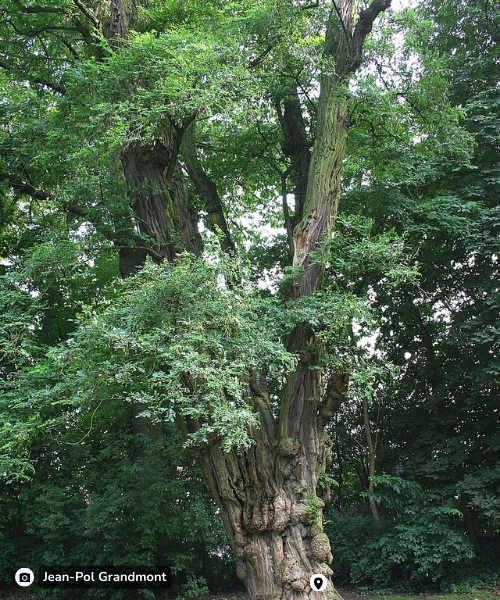Robinia Tree
The Robinia is a species of flowering tree from the pea family, also known as acacia, white acacia, or false acacia. The tree is widely cultivated for its attractive, fragrant flowers and strong, durable wood.



📊 Statistics
The Robinia is an upright tree with a straight trunk and a narrow crown. The dark bluish-green leaves with a contrasting lighter underside give this tree an elegant appearance in the wind, contributing to its gracefulness.
- Average height: 12-30 meters (record: 45 meters)
- Lifespan: 50 to 100 years (record: ± 100 years)
- CO₂ absorption: ~500 kg
How much CO₂ does a Robina tree absorb?

Robinia trees are considered fast-growing and can capture a significant amount of carbon dioxide from the atmosphere throughout their lifespan. The exact amount captured, however, depends on various factors such as growth conditions, climate, and soil type.
Habitat
The Robinia is native to the eastern United States. The exact original range is not precisely known as the tree has been cultivated and is currently found throughout North America.
Robinia is considered an invasive species; when it infiltrates an area, it transforms grassland ecosystems into wooded ecosystems. In Australia and South Africa, the species is regarded as an ecosystem weed.
In Asia, on the contrary, the species is highly favored. Many of these trees were planted during the Russian and Japanese occupations.

Applications of Robinia
Robinia serves various purposes, including:
- Ornamental Tree: Due to their beautiful and fragrant flowers.
- Wood: The wood is strong and durable, making it a popular choice for construction, furniture, and flooring.
- Livestock Feed: Robinia leaves are palatable to livestock and are often used as a food source for horses, cattle, and other grazing animals.
- Landscaping: Robinia trees are frequently used in landscaping, either as specimen trees or as part of a hedge or windbreak.
- Reforestation: Robinia trees are sometimes employed for reforestation and afforestation due to their fast growth and ability to thrive in various conditions.
IUCN Red List

The false Acacia is not considered threatened. It is widely cultivated in many parts of the world, both for ornamental purposes and because of its strong and durable wood. In some cases, it has even been introduced as an invasive species in certain areas. However, it is important to monitor and control its spread in specific regions to prevent negative consequences for native ecosystems.
More about the Robinia
The plant was introduced to Europe around 1601, in what can be considered a reintroduction. This was done by the royal French gardeners Jean Robin and his son Vespasien Robin. A Robinia tree planted by Vespasian Robin still stands on the René Viviani Square in Paris.
The Robinia belongs to the subfamily Faboideae in the pea family (Fabaceae) and is related to peas and beans.
The species is commonly called “false acacia” due to its species name “pseudoacacia,” although it is not particularly closely related to acacia, which belongs to the mimosa subfamily (Mimosoideae).
Both species resemble each other in the shape of their pinnate leaves and thorns, but their flower forms are quite different. Confusion between species of both genera is nearly impossible because acacias are native to subtropical and tropical regions and do not thrive in the cooler climates preferred by Robinia.
Plant this tree


